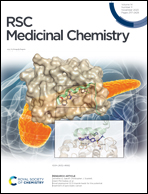Past, present and future of xanthine oxidase inhibitors: design strategies, structural and pharmacological insights, patents and clinical trials
Abstract
Xanthine oxidase, a molybdo-flavoenzyme, and an isoform of xanthine dehydrogenase both exist as xanthine oxidoreductase and are responsible for purine catabolism. Xanthine oxidase is more involved in pathological conditions when extensively modulated. Elevation of xanthine oxidase is not only the prime cause of gout but is also responsible for various hyperuricemia associated pathological conditions like diabetes, chronic wounds, cardiovascular disorders, Alzheimer's disease, etc. Currently available xanthine oxidase inhibitors in clinical practice (allopurinol, febuxostat and topiroxostat) suffer from fatal side effects that pose a serious problem to the healthcare system, raising global emergency to develop novel, potent and safer xanthine oxidase inhibitors. This review will provide key and systematic information about: a. design strategies (inspired from both marketed drugs in clinical practice and natural products), structural insights and pharmacological output (xanthine oxidase inhibition and associated activities) of various pre-clinical candidates reported by various research groups across the globe in the past two decades; b. patented xanthine oxidase inhibitors published in the last three decades and c. clinical trials and their outcomes on approved drug candidates. Information generated in this review has suggested fragment-based drug design (FBDD) and molecular hybridization techniques to be most suitable for development of desired xanthine oxidase inhibitors as one provides high selectivity toward the enzyme and the other imparts multifunctional properties to the structure and both may possess capabilities to surpass the limitations of currently available clinical drugs. All in combination will exclusively update researchers working on xanthine oxidase inhibitors and allied areas and potentially help in designing rational, novel, potent and safer xanthine oxidase inhibitors that can effectively tackle xanthine oxidase related disease conditions and disorders.



 Please wait while we load your content...
Please wait while we load your content...